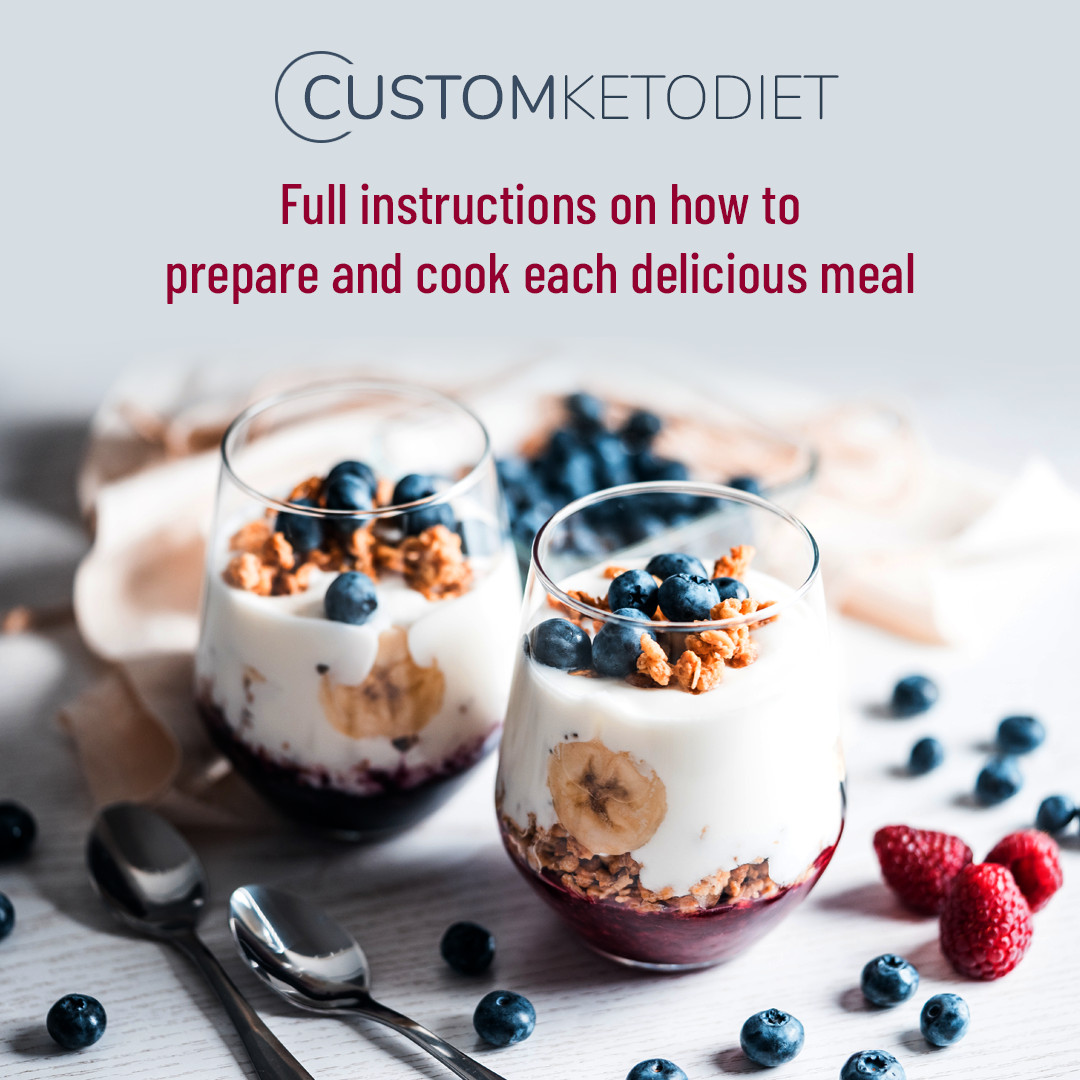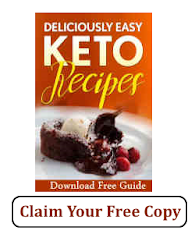
Quick Summary tl;dr
Epilepsy and ADHD may share underlaying mechanisms, and ketogenic diets are well-known to treat the former.
Ketogenic diets, in pre-clinical models and clinical trials, show early promise for the treatment of ADHD in both epileptic and non-epileptic subjects.
Ketogenic diets could improve ADHD symptoms by rebalancing neurotransmitters and altering the gut microbiome.
The ketogenic diet has an over 100-year history of being used to treat drug-resistant pediatric epilepsy. Now, new research is beginning to show that the ketogenic diet might have applications in many other neurological and mental disorders as well ( Norwitz et al., 2020), including one of the most common psychiatric disorders in America: Attention Deficit Hyperactivity Disorder (ADHD).
What’s the Connection Between Epilepsy & ADHD?
The connection between epilepsy and ADHD is well established. In patients with epilepsy, ADHD is the most common co-morbidity, and one in five patients with epilepsy experience ADHD-like symptoms ( Ettinger et al., 2015).
Data from one study, published in 2013, even suggested that the relationship between epilepsy and ADHD was bidirectional, meaning that not only were those with epilepsy more prone to having ADHD, but those with ADHD were more likely to develop epilepsy as well (Chou et al. 2013).
More evidence supporting the relationship between epilepsy and ADHD comes from the fact that those who are related to family members with epilepsy appear to be at an increased chance of developing ADHD ( Brikell et al., 2017).
These and other data are consistent with the notion that ADHD and epilepsy — a condition known to be effectively treated by a ketogenic diet — share at least some underlaying mechanisms. Is it possible that they also share similar responsiveness to ketogenic diets?
Does the Ketogenic Diet Work for ADHD?
There is emerging research showing that the ketogenic diet could be utilized to manage ADHD symptoms. A prospective study showed that, in children with seizures, the ketogenic diet decreased the seizure frequency from 25 seizures per day to less than two per day after one year and significantly improved attention and social functioning ( Pulsifier et al., 2007).
Other studies confirm this finding, showing that the ketogenic diet improves attention and alertness in patients with epilepsy on top of its anti-epileptic effects ( Lambrechts et al., 2012, Kossoff et al., 2004, Hallböök et al., 2006, Karimzadeh et al., 2009).
Table 1. Effects of the Ketogenic Diet on ADHD Symptoms in Human Trials
| Reference |
Study Design |
Number of Subjects (gender) |
Age (average) |
Dietary Intervention |
Treatment Length |
Symptom Changes |
| Pulsifier et al., 2001 |
Prospective study |
65 (36M/29F) |
5.3 years |
Ketogenic diet (4:1) (fat:protein +carbohydrate) |
20 months |
Seizure reduction, improvement in attention and social problems |
| Kossoff et al., 2004 |
Prospective study |
81 (46M/35F) |
4.2 years |
Ketogenic diet (4:1), (3:1), or (2.5:1) (fat:protein + carbohydrate) in one patient |
6-25 months |
Seizure reduction, improvement in alertness |
| Hallböök et al., 2006 |
Prospective study |
18 (9M/9F) |
7.5 years |
Ketogenic diet (4:1) or (3.5:1) (fat:protein + carbohydrate) |
12 months |
Seizure reduction, improvement in attentional behavior |
| Karimzadeh et al., 2009 |
Prospective study |
87 (49M/38F) |
4.6 ± 2 years |
Ketogenic diet (4:1) or (3:1) |
12 months |
Seizure reduction, improved behavior and alertness |
| Lambrechts et al., 2012 |
Prospective study |
15 |
12 ± 3.6 years |
Ketogenic diet (4:1) or Medium Chain Triglyceride Diet |
6 months |
Seizure reduction, improved alertness |
Animal models (rodents and canines) have also been used to investigate the effects of a ketogenic diet on attention, and have generated positive results. In a rat model of temporal lobe epilepsy, selective strains exhibit hyperactivity, impulsivity and easy distraction, showing that there are similar connections between epilepsy and ADHD symptoms in animals ( McIntyre & Gilby, 2007).
Researchers then found that rats placed on a ketogenic diet decreased in activity level within 24 hours, showing that the ketogenic diet does somehow modulate activity levels in animals ( Murphy & Burnham, 2006).
And, in a more recent study published in 2016 looking at ADHD-like symptoms in epileptic dogs showed that a ketogenic diet, including medium-chain triglyceride supplementation, decreases ADHD-like symptoms (Packer et al., 2016).
Now, if only a low-carb diet could get my dog to stop barking at the doorbell! Taken together, there seems to be the potential for the ketogenic diet, traditionally a treatment for epilepsy, to be used in the management of ADHD.
There seems to be the potential for the ketogenic diet, traditionally a treatment for epilepsy, to be used in the management of ADHD.
Table 2. Animal Studies Demonstrating Efficacy of the Ketogenic Diet in Animal Models
| Reference |
Study Design |
Subject(s) |
Age (average) |
Dietary Intervention |
Treatment Length |
Study Findings |
| Murphy & Burnham, 2006 |
Experimental study |
Long-Evans rats |
1 month |
Ketogenic diet (4:1) (fat:protein +carbohydrate) |
1-10 days |
Ketogenic diet reduces activity level |
| McIntyre & Gilby, 2007 |
Literature review |
Amygdala Kindling (epilepsy prone) rats |
N/A |
N/A |
N/A |
Epilepsy prone rodent model shows behavior similar to symptoms of ADHD (easy distraction, hyperactivity, impulsivity) |
| Packer et al., 2016 |
Prospective study |
Dogs with idiopathic epilepsy |
4.59 ±1.73 years |
Medium Chain Triglyceride Diet |
3 months |
MCT diet resulted in significant improvement in ADHD-related behavior |
Important to note is that most of the studies mentioned so far examine animals and humans that have some degree of epilepsy. Studies have shown that there are differences between those with ADHD alone and those with both ADHD and epilepsy, indicating that while the two are related, it isn’t enough to proclaim that the ketogenic diet can treat all types of ADHD ( Sherman et al., 2007).
Additionally, researchers have discovered that epileptiform discharges (epilepsy-like brain activity during sleep) actually impact attention, suggesting that epilepsy may be a cause of ADHD in some cases ( Williams et al., 2016). Therefore, it is important to take into account research out there showing that even in non-epileptic cases, the ketogenic diet can improve ADHD symptoms.
What About the Ketogenic Diet in Non-Epileptic Subjects?
In addition to the many studies investigating the ketogenic diet on epilepsy, there is also research looking at how the ketogenic diet can affect cognitive function and weight loss. From these studies, we can see that the ketogenic diet is effective in both shedding pounds and enhancing cognition.
The ketogenic diet is effective in both shedding pounds and enhancing cognition.
In rodent models, the ketogenic diet and ketone supplements have been shown to improve working memory and cognition ( Hallböök et al., 2012, Hernandez et al., 2018, Murray et al., 2016).
Similar results have been found in human participants, with the ketogenic diet improving working memory and vigilance attention ( D’Anci et al., 2009, Mohorko et al., 2019).
Since working memory deficits are a known symptom of ADHD, these results suggest that even in non-epileptic patients, the ketogenic diet can ameliorate symptoms of ADHD ( Klingberg et al., 2010).
How Do We Think the Ketogenic Diet is Affecting ADHD?
Neurotransmitter Function
Multiple studies show that changes in the neurotransmitters, such as low GABA to glutamate ratio or low dopamine levels, may be contributing factors in ADHD ( Kovács et al., 2019).
GABA is the primary relaxing neurotransmitter whereas glutamate is the primary excitatory neurotransmitter. Therefore, lower GABA or excess glutamate can result in overexcited neurons. Proper dopamine signaling in certain regions of the brain can play a complementary role on behavior, helping to check urges and improve impulse control.
Interestingly, patients on the ketogenic diet exhibited increased GABA levels in cerebrospinal fluid ( Meira et al., 2019). Furthermore, a rodent study found that the ketogenic diet could boost dopamine levels (Church et al., 2014).
These data suggest that the ketogenic could help to relax the brains of patients with ADHD by rebalancing neurotransmitters, adding a biologically plausible mechanism in support of the above described pre-clinical and clinical data.
The ketogenic diet could help to relax the brains of patients with ADHD by rebalancing neurotransmitters.
Gut Microbiome
The community of microorganisms, collectively known as the gut microbiome, that live in our intestines directly and indirectly alter our brain function by talking through nerves (like the vagus nerve), altering nutrient signaling, changing immune function, and even sending direct hormonal messages to the brain.
The gut microbiome has been shown to be involved in anxiety and depression, demonstrating its close relationship with the brain ( Clapp et al., 2017).
In a study investigating the ketogenic diet’s effects on the gut microbiome in mice, the ketogenic diet was shown to alter the gut microbiome and protect against seizures ( Olson et al., 2019). Not only did the ketogenic diet prevent seizures, but the study also showed that the gut microbiome is necessary for the ketogenic diet to be effective.
In fact, seizures were reduced in mice that were transplanted with gut microbes (A. muciniphila and Parabacteroides) associated with the ketogenic diet. These mice did not even need to adhere to the ketogenic diet to see anti-seizure effects, showing that the microbes themselves in the gut microbiome are responsible for seizure prevention. In other words, transplanting the “keto-microbiomes” conferred that anti-epileptic effects of a ketogenic diet in this model.
The study also discovered that the gut microbiome is responsible for modulating the amount of GABA in the brain. The same gut microbes mentioned before seem to govern the amount of GABA available in the brain, with ketogenic mice showing elevated amounts of GABA that is dependent on the presence of the ketogenic diet-related microbes.
In a case study of a patient with epilepsy and Crohn’s disease, gut microbiota transplants eradicated her epilepsy up to 20 months after treatment ( He et al., 2017).
In another microbiota transplant study, Tourette syndrome (also associated with ADHD) was improved in four out of five patients ( Oluwabusi et al., 2016, Zhao et al., 2020).
These studies suggest that a crucial player in how the ketogenic diet works to prevent epilepsy, and potentially ADHD, is the gut microbiome.
Studies suggest that a crucial player in how the ketogenic diet works to prevent epilepsy, and potentially ADHD, is the gut microbiome.
The Future of the Ketogenic Diet in ADHD Treatment
While the research on the use of the ketogenic diet as a treatment option for ADHD is promising, we still need to continue advancing our understanding of how this diet affects those with ADHD.
Studies of this dietary intervention in people with ADHD who do not have co-morbid epilepsy would be crucial to finally determine whether the ketogenic diet can be used to treat ADHD. Given the prevalence and chronicity of ADHD in many people, the inadequate responses to standard treatments and side effects that some experience to medications, the ketogenic diet could prove to be a novel and effective treatment option.
from KetoDiet Blog https://ift.tt/3gsc23p
via
IFTTT






















































